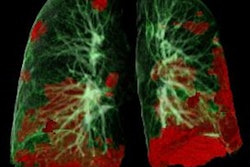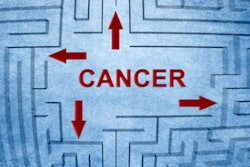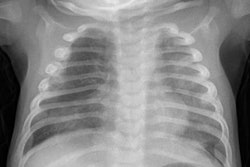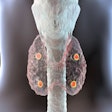
A new study published in Pediatric Radiology looking at pediatric CT patterns of use in the Spanish region of Catalonia has revealed gradual increases in CT scans and the number of CT-scanned patients over 23 years.
According to the study, the absolute number of CT scans increased 4.5% per year in children and young adults to 21 years old across eight centers in the region between 1991 and 2013.
The study is part of a larger international cohort study, EPI-CT (Epidemiological study to quantify risks for pediatric CT and to optimize doses), which involves 1 million pediatric patients and aims to assess the use of CT scanning over time and characterize patients referred for CT scanning as part of a comprehensive strategy of evaluating individual risk.
CT is a fast and highly informative modality, yielding swift and accurate data for a wide range of indications. This often makes it the modality of choice, particularly for children due to its capacity to image without the need for anesthesia or sedation.
However, as the speed and availability of CT as well as its applications have increased, so too has the literature about the risks to health associated with such radiation-bearing techniques, particularly children and young people. Furthermore, with widespread use of multislice CT techniques in Europe, ionizing radiation exposure looks set to increase.
Catalonia is the second largest autonomous community of Spain. In 2013, its population totaled 7.6 million people, of whom 1.6 million (21.2%) were younger than 21. Between 1991 and 2013, exactly 131,655 CT scans were performed on 74,437 children and adults younger than 21.
Of these scans, 76,543 examinations (58.1%) were performed on 42,238 males (56.7%) and 55,112 (41.9%) on 32,199 females (43.3%). Although the trend in the number of CT scans varied among the hospitals, overall the number of CT scans increased by 4.5% per year.
Increasing trends in the use of CT were seen in six of the eight hospitals during the study period. The increases were statistically significant for the two biggest hospitals, where scans in patients ages 0-20 years old totaled 3,200 and 4,100 respectively in 2013, and the annual growth rate was 8.1% and 5.6% over the study period.
The rate of scanned patients changed little (8.3 to 9.4 per 1,000 population) because the number of hospital patients also increased. Patients undergoing more than one CT scan and more than three CT scans per year respectively showed a 1.51-fold increase (statistically nonsignificant) -- and a 2.7-fold increase over the 23 years, according to the study authors.
The researchers listed a number of contributing factors that could, in part, explain the increasing trends in CT scan frequency over the 23-year period: Scanner numbers in Spain per 100,000 population nearly doubled between 1996 and 2011, the authors claim. Furthermore, indications for CT increased, as did the rate of multiple scans per patient, and the size of the patient population overall.
Already, CT in children is commonly used for skull trauma, diagnosing abdominal problems when ultrasound is inconclusive, and for the diagnosis and follow-up of neoplasms. While the jury is out on the impact of CT on health, the authors point to pediatric observational studies that suggest there is an increased risk of leukemia and brain tumors in children and adolescents from multiple CT scan exposure.
"Even though for an individual child the health risks from one CT scan are likely to be small and the individual benefit may outweigh the risks, many children are likely to receive multiple scans. It is therefore important that pediatric CT scans are properly indicated and performed and that the resulting radiation doses are closely monitored," the authors stated.
In Spain, almost 4 million scans were performed in 2011, representing a rate of 85 CT scans per 1,000 people. This compares with 320.4 scans per 1,000 in Greece and 273.8 per 1,000 in the U.S., the countries with the two highest CT scan rates according to Organization for Economic Co-operation and Development (OECD) indicators.
In the U.S., 70 million CT scans are performed each year and the modality contributes nearly half of the population's collective radiation exposure from all medical x-ray examinations, according to the authors.
They added that prediction models suggested that up to 2% of all future neoplasms in the general population of the U.S. could be attributable to CT scanning.



















